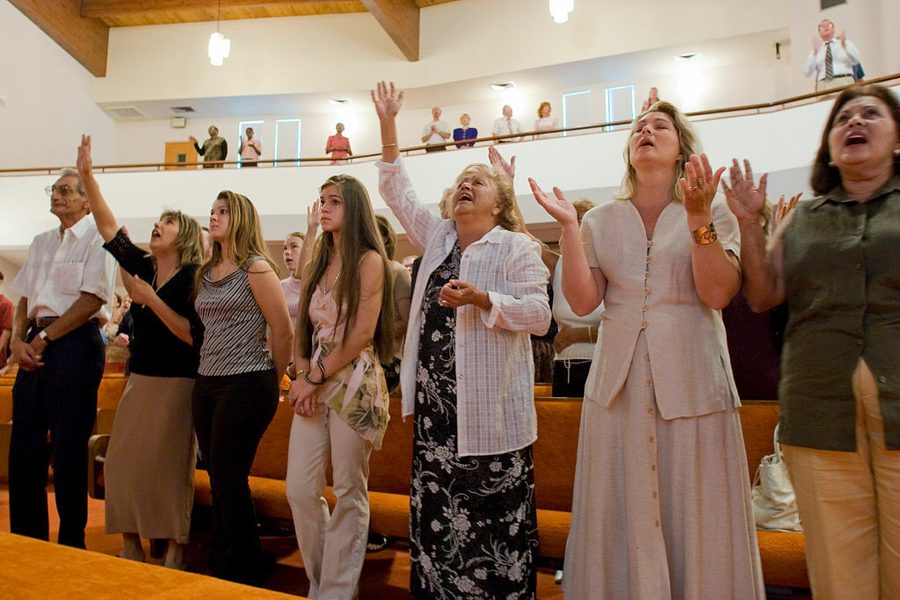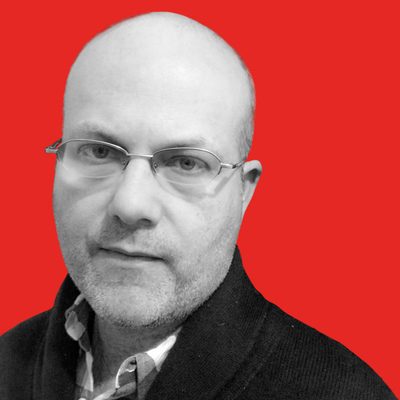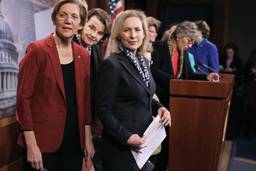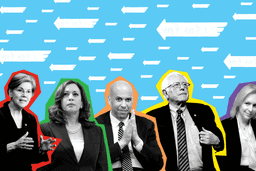How Evangelicals Revolutionized U.S. Politics
Even as they lament the imminent demise of Christianity and the oppression of true believers, evangelicals maintain an outsized influence on politics and policy.
Theo Anderson

One of the under-reported and largely forgotten stories of George W. Bush’s war in Iraq was the campaign by evangelical Christians to spread the gospel in the aftermath of the invasion. Perhaps you thought the war was about oil. In truth, it was also about Jesus.
In The Evangelicals: The Struggle to Shape America, journalist Frances FitzGerald notes that evangelical Christians had created a comprehensive plan to convert Muslims in the years before the 9/11 attacks, focusing on the nations “between the 10th and 40th parallels north of the equator in Africa, the Middle East, and Asia, where much of the world’s Muslim population lived.” The Southern Baptist Convention (SBC), the largest Protestant denomination in the United States, had a particularly strong interest in Iraq. According to the leader of a missionary organization, conservative Christians “had prayed for years that Iraq would somehow be open to the gospel.”
Somehow it was, of course. The U.S. invasion began in the middle of March, 2003, and by “early April representatives of the International Bible Society were already in Iraq watching the bombs fall and distributing tracts and videos,” FitzGerald writes. The International Mission Board of the SBC “announced that eight hundred missionaries had volunteered to distribute food and shelter and to ‘help Iraqis have true freedom in Jesus Christ.’”
FitzGerald’s account of evangelicals in Iraq takes up only a few pages in her 700-plus page book, but it sums up one of her main themes, which is that evangelicals have often shaped American politics and policy far more profoundly than we recognize until after the fact. Last November, for example, white evangelical/ born-again voters gave Donald Trump 81 percent of their vote. Exit polling after the 2004 election showed that “moral values” were the highest priority for a plurality of voters, most of whom voted for Bush.
“Democrats had not seen this coming,” FitzGerald notes. But then, they never do: “Even the well informed tend to have very short attention spans when it comes to evangelicals.”
That’s partly because evangelicals are in a perpetual state of despair about their waning influence in American life, and it’s easy to accept their laments at face value. But all the weeping and wailing serves a practical purpose and has little basis in reality. Despair has been evangelicals’ energizing and organizing tool from the very beginning, helping them thrive even as they lament the imminent demise of Christianity and the oppression of true believers.
What is truth?
FitzGerald’s previous works include Fire in the Like: The Vietnamese and the Americans in Vietnam, a book about Vietnam for which she won a Pulitzer Prize and the National Book Award, Way Out There in the Blue, the story of the “Star Wars” missile program under Ronald Reagan, and Cities on a Hill, an account of several “visionary communities,” including a long chapter on the Baptist pastor Jerry Falwell. In The Evangelicals, she explicitly limits her scope to white evangelicals, rightly noting that the African-American evangelical tradition has its own very different trajectory and commitments.
FitzGerald traces the origins of evangelicalism to the late 19th century, when liberalizing trends within the Protestant denominations led some Christians to wrestle with whether Christianity’s claims were metaphorically true or, in fact, literally true. Most importantly, is the Bible the inerrant word of God or a work of literature, created by humans? And is Jesus a divine being whose life and crucifixion made human salvation possible — or a great, but human, moral prophet?
Much of evangelicalism’s history is the story of the widening gulf between Christians who staked out irreconcilable answers to those questions. In the half-century between the end of Civil War and World War I, the conservative Christians who came to identify as evangelicals slowly lost their grip on a wide swathe of institutions, especially institutions of higher education, which translated into a massive loss of cultural authority. That was the context for the famous Scopes trial in 1925, when a teacher in Tennessee was convicted for teaching evolution in a public school. Two incompatible ways of understanding the world were on trial: William Jennings Bryan, the great populist evangelical, defending “revelation” and creationism, and Clarence Darrow, the great lawyer and humanist, arguing for a scientific understanding of human origins. It was a fundamental choice between two different notions of truth, two different sources of authority.
Evangelicals and their ultra-literalist cousins, fundamentalists, lost the public-relations battle at Scopes. Bryan was widely mocked for his incoherent defense, and his death soon after the trial seemed symbolic of evangelicalism’s fate. And much of evangelicalism’s power over the past century has derived, paradoxically, from embracing that storyline: Evangelicals are the faithful remnant of true Christians, persecuted by secular society for their faithfulness.
The more complex reality is that, while evangelicals lost much of their power in mainstream institutions through the 20th century, they built a parallel universe of institutions that drew on a deep well of populism. In doing so, they learned to compete and thrive in the cultural marketplace. Fundamentalists aimed to separate from mainstream American institutions completely, but among evangelicals, there was a symbiotic relationship: They contributed to the mainstream culture and they drew from it what was useful to their purposes. They’ve long been masters of media in all forms, creating their own publishing houses and radio, television and web networks. But these endeavors have often reached well beyond a strictly evangelical audience — after all, the mission is to share the “good news” about Jesus — and the line between Christian and mainstream pop culture has always been blurry.
Graham: the insider as outsider
In the middle decades of the 20th century, the force that brought all the evangelical currents together was Billy Graham. The revivalist from North Carolina, who grew up fundamentalist but embraced a less dogmatic and separatist variety of evangelicalism as his star rose, was in some ways as mainstream as it’s possible to be in American society. His revivals filled New York City’s Madison Square Garden for several weeks in the 1950s, and they filled stadiums around the country for many decades. He wrote books and a newspaper columns that were widely read, and he was a confidante of every president from Harry Truman to George W. Bush. Even so, Graham never lost the evangelical sense of being set apart from American society and burdened with warning the nation of God’s imminent judgement, probably at the hands of the Soviet Union. “Only as millions of Americans turn to Jesus Christ in this hour and accept him as Savior,” he once said, “can this nation possibly be spared the onslaught of demon-possessed communism.”
Graham, who turns 100 next year, has retired from public life, and his role as the de facto national pastor had largely faded by the 1980s. He’s never been replaced, at least not by a single person. There are, instead, multiple power centers anchored by dozens of preachers who typically preside over vast, multi-faceted ministries. In addition to pastoring a congregation, they write books, host radio and television shows and organize conferences. What hasn’t changed since Graham’s time is that, for all the despair among evangelicals about the decline of Christianity and the falling away of the faithful, the U.S. remains deeply religious. A 2014 Gallup poll found that 28 percent of respondents believe that the Bible should be taken literally, and another 47 percent said it was “the inspired word of God.” Only 21 percent viewed it as purely a work of literature.
Truer than the truth
FitzGerald dutifully covers all of that ground. But the great strength of her book is its account of how evangelicals got politically organized and energized and used their power to transform U.S. politics in the 1980s and 1990s, with consequences that are still playing out. The evidence of their political power became clear in 1980, with the election of Reagan. But Reagan’s victory culminated several years of organizing and muscle flexing by some of the movement’s early leaders, notably Jerry Falwell. In 1976, Falwell organized an “I Love America” tour involving a series of rallies around the nation. The tour, FitzGerald notes, “attracted enormous crowds. On platforms festooned with red, white, and blue bunting [Falwell] spoke of America’s religious origins and the country’s declension into unbelief and sin. ‘This is a great nation,’ he proclaimed. “What has gone wrong? What happened to this great republic? We have forsaken the God of our fathers.’” In 1976, both presidential candidates, Jimmy Carter and Gerald Ford, declared themselves born-again Christians. George Gallup, the pollster, declared it “the year of the evangelical.”
Falwell’s rise points to a great irony at the heart of evangelicalism. The movement came into being as a great last stand on behalf of the truth, namely the Bible. But its leaders have often had a casual relationship with the truth, and that fact has rarely been disqualifying. Falwell, for example, invented an exchange with Carter, in which he confronted the president about the presence of gays on the White House staff. Carter, according to Falwell, “replied that he had to represent the American people.” When it was pointed out that the confrontation hadn’t actually happened, he rationalized the story as a parable. As FitzGerald writes, “Falwell often exercised what he considered his right as a preacher to tell stories that … were truer than the truth.”
The same liberty and looseness with truth is evident in Pat Robertson, the other major architect of the modern Christian Right. Though formally a Baptist, Robertson adopted some of the doctrines and practices associated with Pentecostals, like faith healing. On his TV program, The 700 Club, he claimed to cure his audience of their afflictions, from bone spurs to cancer.
In addition to being a healer, Robertson claimed to have unlocked the truth about the global system. In The New World Order (1991) he supposedly exposed “a vast and sinister conspiracy that had shaped world history from the French Revolution through the Cold War,” FitzGerald writes. The central players included several favorites of right-wing conspiracist thinking, including the Council on Foreign Relations and the Rockefeller family. But when you dug down far enough into the heart of darkness, you finally discovered a secret society, the Illuminati, that had “caused the French Revolution, inspired Marx and Engels, and fostered the Bolshevik movement,” all with the help of Jewish bankers. The nation’s only hope of thwarting “a worldwide satanic dictator from winning his battle,” Robertson thought, was “a vital, economically strong, Christian United States.”
Robertson is now 87, and his influence within evangelicalism has greatly diminished. But in the 1980s and 1990s, he was a key figure in the political mobilization of conservative Christians, channeling their resentments into political activism. In 1988, Robertson mounted his own bid for the GOP presidential nomination, and though it quickly fizzled, it inspired him to take his political engagement to a new level. “We are going to place Pat Robertson people on city councils, school boards and legislatures all over this country,” Robertson announced after his campaign’s demise. “That’s [God’s] plan for me and for this nation.” He subsequently founded The Christian Coalition to advance conservative causes and candidates. The group and its executive director, Ralph Reed, played a key role in the “Republican revolution” of 1994, when the GOP decisively took control of both the House and the Senate.
Trumping American democracy
Robertson downplayed his more exotic religious beliefs during the presidential race, portraying himself as a mainstream businessman, and indeed, his similarities with Trump are striking. There is the paranoia and the conspiracy thinking. There is the fact that both men made their careers as masters of media. There is the talk of revolutionizing U.S. politics: A Robertson staffer once said that the 1988 campaign was about “a permanent restructuring of American politics.” And, bizarrely, Robertson’s campaign theme was a clunkier version of Trump’s own theme: “Restore the Greatness of America Through Moral Strength.”
At the time of Robertson’s short-lived bid, Trump was a New York real estate tycoon and a prominent symbol of the decadent 1980s, basking in the success of his recent, bestselling book, The Art of the Deal. It was unimaginable that, three decades later, he would tap the same energies and woo the same audience that Robertson tried to exploit. And yet, in retrospect, it makes sense.
It helped that Trump became a reality TV star through his NBC show, The Apprentice, reaching a level of celebrity that dwarfed Robertson’s. And Trump’s zero-sum, winners and losers worldview spoke powerfully to an evangelical subculture that was birthed and nurtured in a sense of crisis, holds an apocalyptic view of humanity’s fate and imagines itself to be set apart from mainstream American society, even as it peddles its ideas aggressively in the cultural marketplace. Trump, who spoke the evangelical language of betrayal and had their pose of being victimized and persecuted, promised sweet redemption. Didn’t Jesus say that the last shall be first? It hardly mattered that Trump perpetually lied. Evangelicals were accustomed to leaders — like Falwell, like Robertson, like thousands of others — whose words and claims are truer than the truth.
Evangelicals have lost many battles on many fronts over the past half century. They’ve mostly been on the losing side of the movements for racial, gender and LGBT justice, and they haven’t succeeded in their cherished dream of repealing reproductive rights. And yet, as FitzGerald’s masterful account reminds us, they aren’t going anywhere. Trump is now president and a hardcore evangelical, Mike Pence, is his potential successor. The Supreme Court is dominated by men chosen for their appeal to evangelicals and red-state legislatures are hotbeds of hard-right radicalism, pushed by evangelicals and their institutions. The weird, co-dependent relationship between evangelicals and “mainstream” America endures, even as the tension between revelation and reason renders it evermore dysfunctional.








